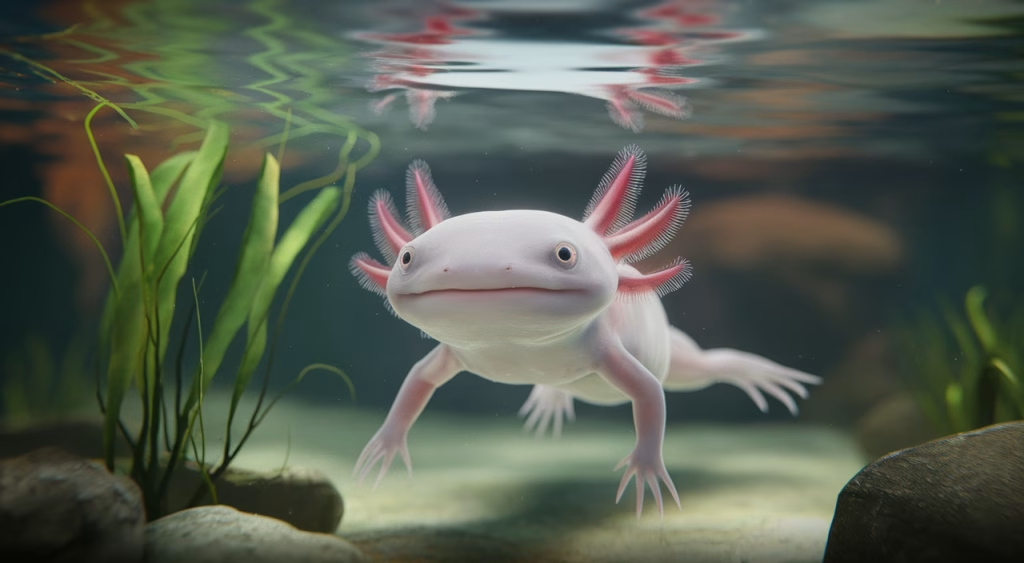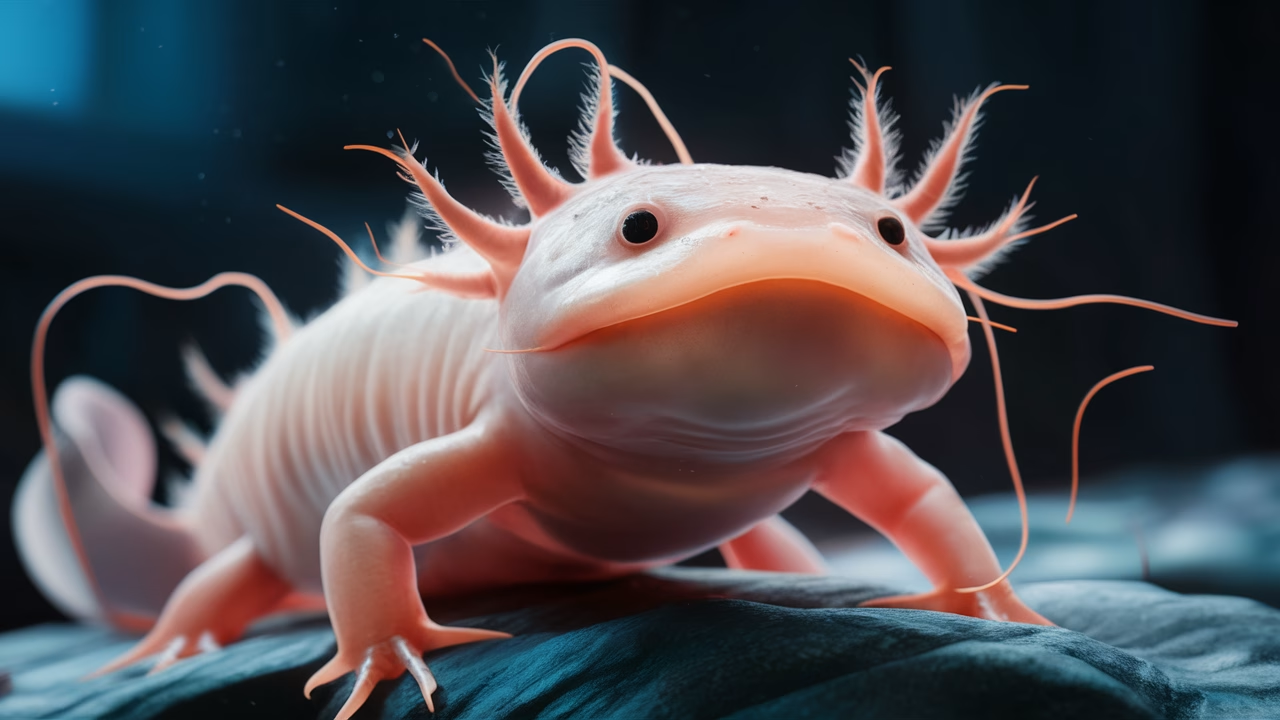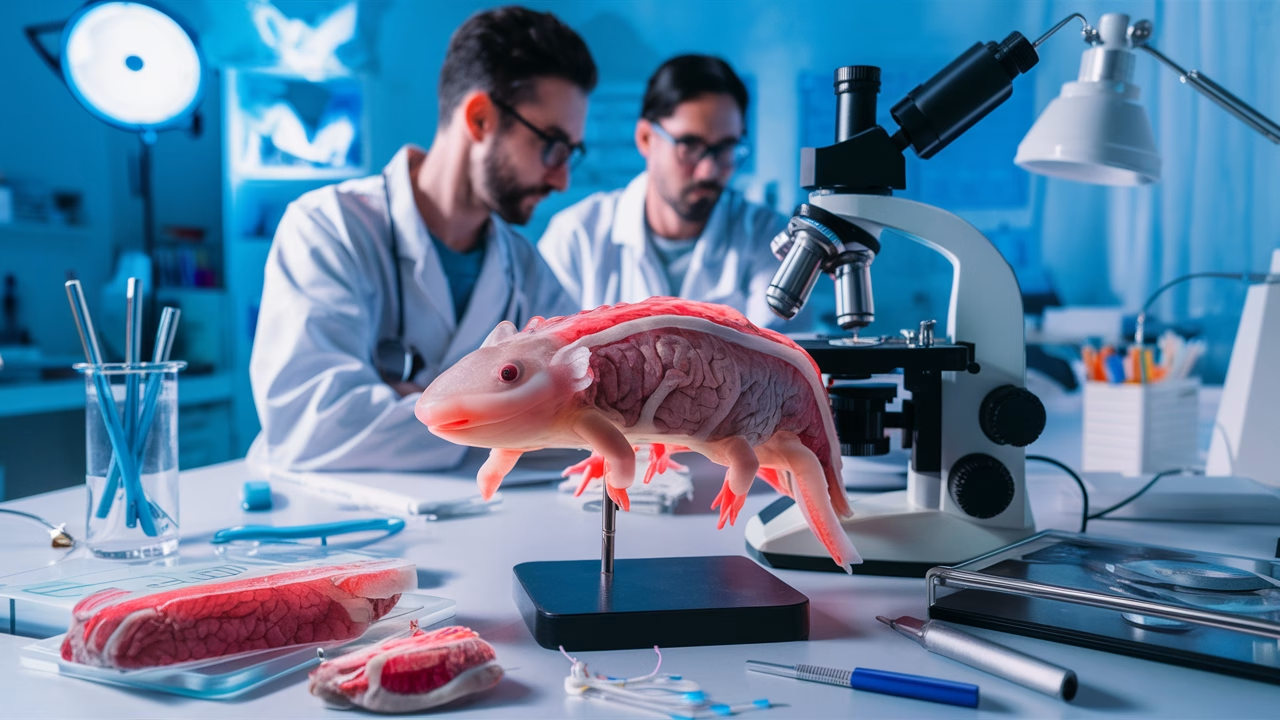How do axolotls regenerate spinal cords and parts of the brain?
Axolotls can regenerate spinal cords and parts of the brain through an extraordinary biological process involving specialized cells and molecular signaling. These remarkable salamanders activate dormant genetic pathways after injury, allowing them not just to heal—but to fully restore lost neural tissue, limb structure, and function with precision that surpasses any other vertebrate.
TL;DR — Axolotl’s Mind-Blowing Regeneration in a Nutshell
- Axolotls can regenerate spinal cords and parts of the brain through an intricate balance of immune response and stem cell activation.
- Specialized progenitor cells—akin to stem cells—are key to their healing magic.
- This regeneration covers limbs, spinal tissues, brain segments, and even parts of the heart.
- Scientific studies are unlocking clues about how humans may one day mimic these abilities.
- The axolotl regenerative process is opening bold new doors in regenerative medicine.
What Makes Axolotl Regenerative Abilities Unique Among Amphibians?
The regenerative abilities of axolotls aren’t your average salamander superpower. What sets them apart is their unparalleled capacity to regenerate complex neural tissues with precision and complete functional restoration. While many amphibians can regrow tails or limbs, axolotls go much further—restoring spinal cords and major portions of the brain with astonishing fidelity that leaves scientists amazed.
The key lies in how axolotl healing abilities prevent scar formation entirely. In mammals, injuries often lead to fibrosis or scarring that impedes nerve reconnection. Axolotls skip the scar-tissue pathway completely, instead reentering developmental-like stages at injury sites, enabling perfect tissue rebuilding through their remarkable axolotl regenerative process.
Understanding the Axolotl Regenerative Process
The Cellular Architects: Blastema and Progenitor Cells
When you observe axolotl spinal cord regeneration in action, you’ll witness something extraordinary. After spinal cord damage, the axolotl’s immune system initiates a swift but measured response. Rather than flooding the area with inflammation as we see in mammals, it creates a specialized structure called a blastema. This mass contains progenitor cells: versatile cells programmed to rebuild nerves, muscles, and tissues with surgical precision.
What makes this process truly remarkable is the specialization of these cells. Progenitors destined to become neurons regenerate nerves perfectly, while those meant for connective tissue form muscles, and others trigger blood vessel growth. The coordination demonstrates the sophisticated nature of regenerative abilities of axolotls.
Axolotl Spinal Cord Regeneration: The Complete Recovery Process
Axolotl spinal cord regeneration uses a strategy that researchers compare to “reopening embryonic blueprints.” After spinal cord damage, ependymal cells—lining the central canal of the spinal cord—multiply rapidly and migrate to the injury site. These cells then transform into neuron-supporting types and even generate new neurons altogether, showcasing the incredible axolotl healing abilities.
The surrounding environment in the axolotl spinal cord remains completely permissive to regrowth. Neural circuits can reconnect seamlessly, and axonal pathways—the highways for neural signals—regrow without any obstruction, giving the animal both complete mobility and sensation restoration.
| Feature | Axolotl | Mammals |
|---|---|---|
| Spinal cord regeneration | Complete with motor/sensory signal return | Minimal to none |
| Scar formation | None | High |
| Progenitor cell activation | Rapid and targeted | Limited and non-dedicated |
Axolotl Brain Regeneration: Rebuilding Neural Complexity
When it comes to axolotl brain regeneration, you’re witnessing something that defies conventional understanding of neural recovery. The brain might be the most complex organ in the animal kingdom, but axolotls approach it like master architects—if something breaks, they simply rebuild it better.
These amazing creatures can regrow large sections of the forebrain with remarkable precision. Studies reveal that after brain tissue removal, neural progenitors flood the area in organized waves. These cells, guided by precise local cues, generate new neurons and rewire connections over weeks, demonstrating that axolotl brain regeneration produces not just structural rebuilding—but complete functional restoration.
Researchers now use fluorescent tagging techniques to observe this regenerative abilities of axolotls process in real time, mapping how brain tissue regrows like a perfectly orchestrated reconstruction project.
Why Axolotl Healing Abilities Drive Medical Breakthroughs
From Tank to Treatment: Scientific Study on Axolotl Spinal Cord Regeneration
Multiple universities and biotech institutions worldwide are now using axolotls as revolutionary models to understand regenerative healing. Groundbreaking axolotl research and regeneration studies with titles like “Epimorphic Regeneration in Ambystoma mexicanum” aim to decode the master blueprint behind the axolotl regenerative process.
In practical applications, this means potential breakthroughs in spinal cord injury treatments, enhanced neuroplasticity therapies for brain trauma, and even future solutions for paralysis or degenerative diseases in humans. The regenerative abilities of axolotls are literally reshaping how we approach neural medicine.
How Axolotl Regeneration Could Revolutionize Spinal Cord and Brain Injury Treatment
Unlocking Human Potential: What Axolotl Research Means for Medicine
Here’s what excites researchers worldwide: scientists identify these biological miracles in axolotls, then work to reverse-engineer them for human benefit. While we don’t regenerate like axolotls yet, researchers believe the same genetic tools exist in our DNA—they’re simply dormant, waiting to be activated.
Gene editing tools like CRISPR and targeted protein expressions could potentially activate regeneration pathways in humans. Imagine healing severed spines, restoring lost eyesight, or regrowing brain matter after stroke—all inspired by axolotl healing abilities and their extraordinary regenerative process.
Frequently Asked Questions
- Can axolotls regrow an entire brain?
Not entirely. They can regrow parts of the brain, especially areas like the forebrain, but not an entire adult brain. Still, the regenerated sections function remarkably well. - How fast can axolotls heal injuries?
Minor injuries can begin healing in days, while complex structures like limbs or brain tissue may take several weeks, depending on the extent. - Are axolotls used in human medical research?
Yes. Axolotls are a vital model organism in neurological, spinal cord, and regenerative medicine research. - Do other animals have similar regeneration traits?
Other amphibians like newts and some lizards can regenerate tails, but few match the axolotl’s level of complexity in nervous system restoration. - Is axolotl regeneration genetic?
Yes. Their genome contains expressed genes responsible for cell growth, positional memory, and inflammation suppression—all key in regeneration. - Can we trigger axolotl-like regeneration in humans?
Not yet, but ongoing studies using gene therapy and stem cells aim to replicate these abilities. - Are axolotls endangered?
In the wild, yes. Habitat loss and pollution have declared them critically endangered, although captive populations are thriving in labs and aquariums.





